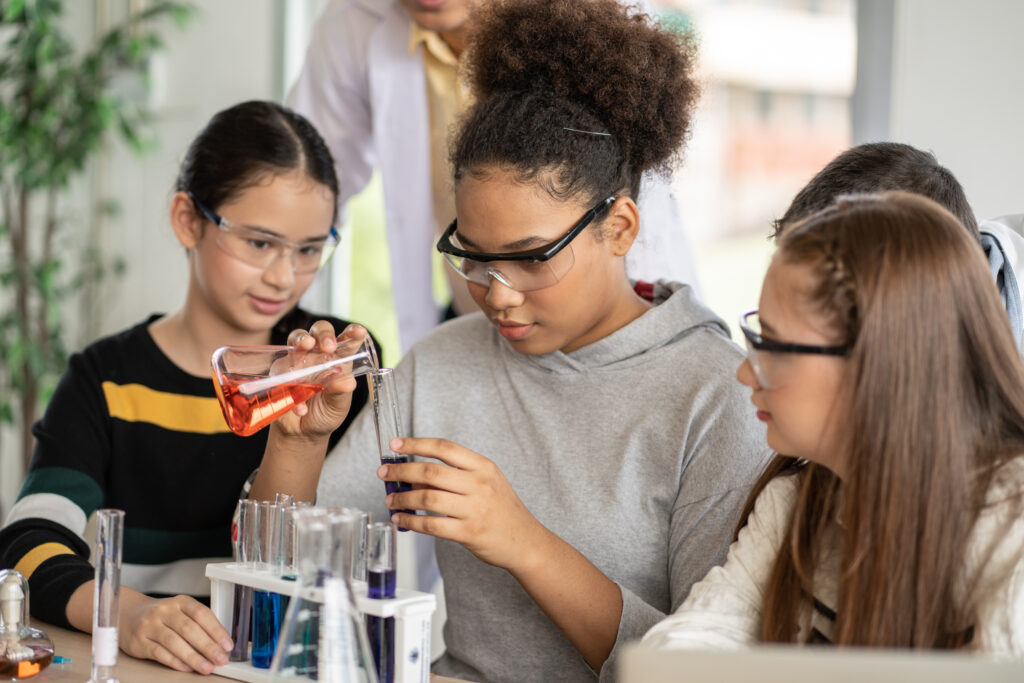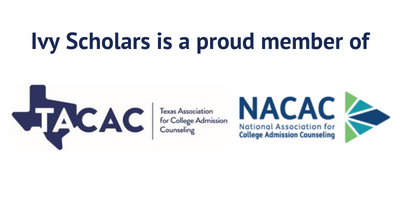Middle school students are bright, curious, and sometimes rambunctious, but are often blessed with a curiosity about the world around them, and a desire to explore it. This is something to be fed and nourished, as passions born early can be built into wonderful things over time, long careers of wonder and discovery born of a few questions asked early, and pursued to their fullest.
The Junior Innovators Challenge is a top science fair competition for middle school students, and seeks to help spark and advance this exact passion for discovery. In this article, we’re going to examine what exactly this challenge is, how you can participate, what it takes to do well, and whether or not it’s a good choice for you. It’s never too early to start learning, so let’s start now!
Understanding the Junior Innovators Challenge
Run by the Society for Science, (the same organization behind other elite science fairs, including Regeneron), this is the largest science fair for middle school students in the US, with thousands of competitors each year. Its full name is the Thermo Fisher Scientific Junior Innovators Challenge, due to a funding arrangement reached in 2023.
This competition works in stages; students first compete in regional science fairs which are associated with, but not directly run by, the main challenge. Students placing in the top 10% of those fairs are eligible to enter the main fair. They have a page on their website to find affiliated fairs by you; these are intended to be accessible for students across the country, though students in more densely populated areas may have an easier time reaching a nearby fair.
Students in the top 10% of these fairs are then invited to apply for the main fair; space at this is limited, and only 300 students are chosen to compete each year. In order to select these semifinalists, students apply online; this application is open from February-June, with students chosen announced in September.
From this pool of 300 semi-finalists, 30 finalists are then chosen. These students are invited to come to Washington DC to compete in-person, and present their projects. Prizes are awarded to students in this coterie. Note that simply being selected as a semi-finalist is still a remarkable achievement, and one well worth celebrating.
Competing in the Junior Innovators Challenge
Now that we’ve covered what this challenge is, we’re going to discuss how to actually compete in it. Note that affiliated fairs may have their own requirements, but these will generally line up with the overall requirements for the national fair. Be sure to check with your local fair when designing your own project.
Eligibility
This fair is for middle school students, those currently in grades 6-8. You must be an enrolled student; whether in a public or private school. Homeschooled students may also participate. Fairs must be registered with the society for science; these fairs then nominate the top 10% of projects to be able to apply for the national fair.
Students may compete individually, or in teams of up to three. If working in a team, each team member will need to complete a separate application.
All research for the project must have been done in the past year. Students may re-enter the fair multiple times, even those selected as finalists, unless they won one of the top prizes. Students must submit a new project each time they enter the fair, reusing or re-entering past projects is not permitted.
Requirements for Nominated Students
If your project is nominated for entry into the main fair, you must meet additional requirements. First, and most importantly, you must enter the same project in the fair that got you nominated in the first place; you can’t change horses midstream. You may also only enter a single project. If, for example, you had both a solo project and a group project nominated, you could only continue with one of those.
Note that you can update your project with more data, but only if the data was collected with the same methodology used and described in your initial fair entry.
All students must agree to abide by the fair’s ethical guidelines. This includes noting any conflicts of interest, making sure you follow all applicable laws, and conducting research with academic integrity (not falsifying data or committing plagiarism [including the use of AI]). If you are doing research involving living creatures, be that studies of animals or psych surveys on humans, you must get your research approved by an Institutional Review Board to make sure it meets the highest ethical standards. As this can be a serious barrier, many students opt not to use living participants.
The Application
You can view a full pdf of the current application here. This has several key parts. The first of which is basic demographic information about you and your parents, plus information about your school. Fill this out carefully; it isn’t necessarily difficult, but you want to avoid making any careless errors.
The next set of questions are about your project generally; why you decided to undertake it, where you worked on it, and other basic information. If you had a research mentor (usually a teacher at your school), you should include that information as well.
You then describe the project itself. You first choose a category; more than one may fit, but you should select one you think best matches the project you completed. You then give an overview of your project; an abstract if you have one, or a brief elevator-style pitch. You must also then discuss how you came up with your project idea in 200 words.
You must then discuss your project in detail. In many ways, what they ask for mirrors a scientific paper. They want:
- Your research question, or for engineering projects the problem you were trying to solve (50 words)
- Your hypothesis or engineering design criteria (125 words)
- Your methodology and procedures (400 words)
- How you analyzed and interpreted your data (300 words)
- The conclusions you reached (300 words)
- Any problems that arose during your research, and how you troubleshot them (200 words)
- Who else contributed to the project, and what they added (250 words)
- Optional references or citations (200 words)
Students who worked as part of a team must answer an additional question about how work was divided among the team, and how each person contributed.
You must also upload a visual aid with this portion of your application. This is two pages of standard sized paper on which they want you to include graphs, charts, and figures relating to your data, analysis, and results. This should have minimal text, primarily only captions. This specifically is not meant to be a digital version of your poster, but just the graphs and figures from it which are most important to understanding your work and results.
You may not include QR codes which link to webpages, embedded video or audio files, or identifiable pictures of you, team members, or any human participants. Photos with faces blurred or identities otherwise concealed may be included. You do need to properly cite and source all images and graphics in the visual aid, whether created by you or otherwise.
The next part of the application is essay questions about you and your journey in STEM. The purpose of the Society for Science is to promote STEM engagement and interest, so this is of particular interest to them. They ask for three short essays:
- Describe your STEM journey. How did you become interested in STEM and/or scientific research and your project this year? Who helped you, or influenced you (in ways good or bad)? How is STEM viewed in your school or community? (max. 200 words)
- Some students have a background, identity, interest, accomplishment, obstacle, setting or circumstance that is so significant they believe their application would be incomplete without describing it. If this sounds like you, then please share your story. (max. 200 words, Optional)
- The world population has reached over 8 billion people. Describe two important changes to STEM industries (for example: agriculture, medicine, technology, etc.) that would need to be made to help support the growing population. How would you implement one of those changes? (max. 300 words)
The next portion asks about your activities, both related to STEM and not (though with a focus on STEM). First you select which activities you are part of, then you have some brief chances to explain participation in any STEM research programs, or other activities you are part of.
The final section is about paperwork, including from your previous fair. This is not meant to be challenging in the same way the essays are, but is about checking all the boxes, and making sure applicants have everything properly in order. We recommend completing this section with parents or a research mentor.
As a note, all of the writing on the application must be your own. You can certainly ask a mentor for help with brainstorming or editing, but it must be your work. In the same way, use of AI is not permitted; if the AI is the one doing the writing, then you aren’t, and that isn’t what they want to see.
Is the Junior Innovators Challenge Right for You?
This is a remarkable opportunity; there aren’t nearly as many options for middle school students to explore and compete like this as exist for high schoolers. That said, this isn’t going to be something every student desires or benefits from; it is a good opportunity, but not a universal one.
Junior Innovators is best for students who have a strong interest in STEM fields, and who are looking to dip their toes into research and discovery in those fields. Science is research, the discovery and dissemination of the new, but most students never really get to experience that; all the problems they solve are ones with answers in the back of the book. This is a chance for students to explore, and to push themselves.
Even for students who don’t win, simply the experience of doing research, going to science fairs, and meeting peers who are similarly interested and motivated can be extremely rewarding. Middle school students have a long time to plan out their futures, but the more things they try now, the better idea they will have of what exactly they like, and what they don’t.
If you have a student who is interested in STEM, and curious about the world around them, then this is a great way for them to begin heightening that interest, and exploring what those fields are like in more depth. They might love it, they might not, but the experience itself is worth pursuing in order to find out.
Final Thoughts
Science fairs are nothing new, but they’ve come a long way from the days of baking soda volcanoes. The Junior Innovators Challenge takes young students seriously, and offers them a chance to really take part in doing science, exactly the way professionals do. This is something many students love and thrive in, discovering they are capable of so much more than they expected, and loving everything else they learn along the way.
If you are interested in pursuing this, or other opportunities, then Ivy Scholars can help. Our research mentors are gifted at helping students understand the research process; guiding and teaching them while empowering students to do the work of real scientists. Our candidacy building program helps students find opportunities like this, chances for them to really take charge of their passions, and to explore them to their fullest. Schedule a free consultation today to learn more; we’re always happy to hear from you.








